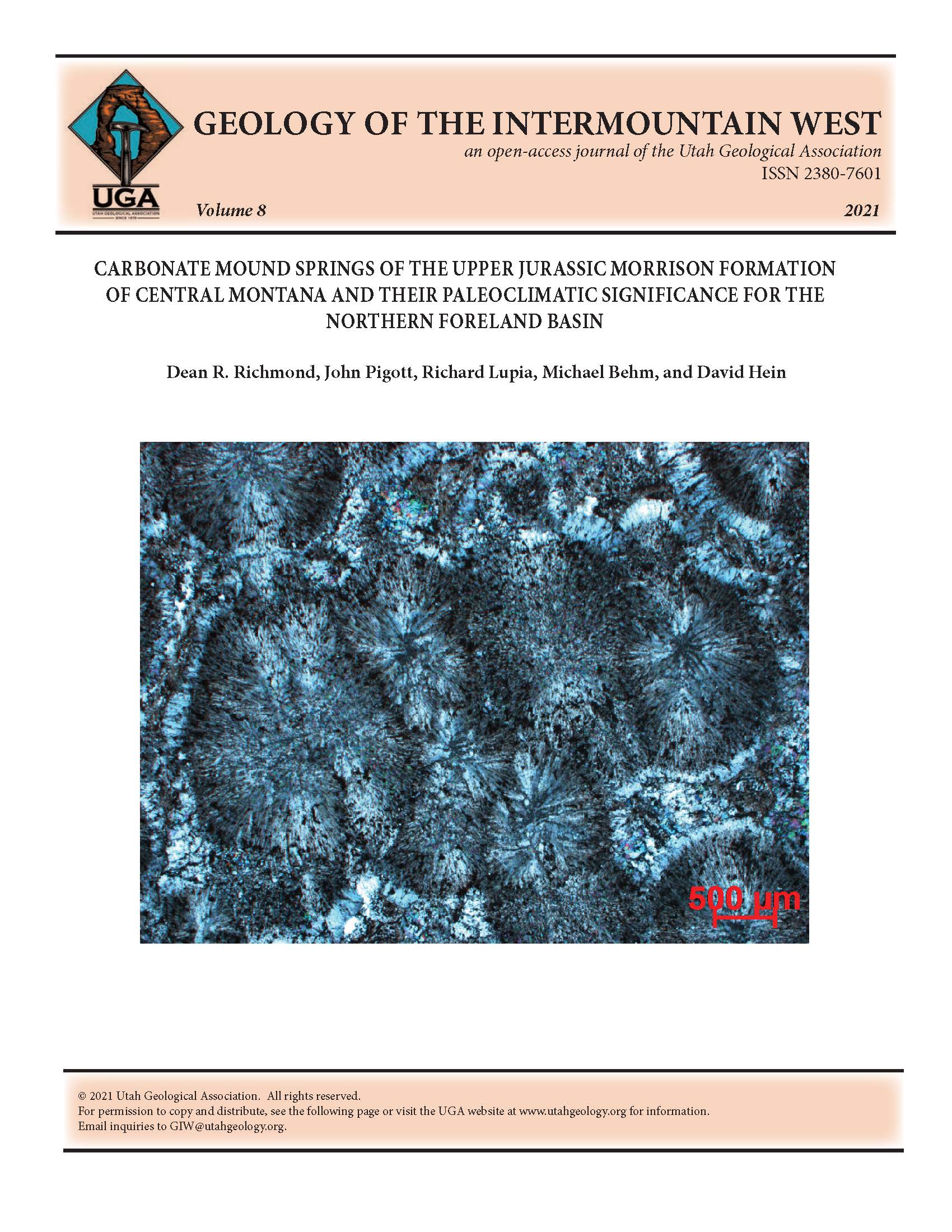Carbonate mound springs of the Upper Jurassic Morrison Formation of central Montana and their paleoclimatic significance for the northern foreland basin
Abstract
Recent investigations of the Upper Jurassic Morrison Formation in central Montana resulted in the discovery of 105 small (< 3 m diameter) carbonate buildups in close geographic and stratigraphic proximity. The buildups are divided into two groups by dominant mineralogic composition: siderite versus calcium carbonate. The buildups are found in five distinct spatial clusters and are distributed in association with, and in alignment to, regional Jurassic-aged structural lineaments. The buildups are distributed stratigraphically between 40 to 52 m above the base of the Morrison Formation. Interpretation of electrical resistivity tomography surveys indicates that additional buildups are present in the subsurface. Carbonate-rich
groundwater migrated up fractures to the capillary fringe or the surface. The siderite buildups formed in the near subsurface capillary fringe, whereas the carbonate mounds are subartesian mound spring tufa deposits. The bulk rock negative δ18O and δ13C values demonstrate the buildups were produced by meteoric waters in a continental setting with the groundwater having a short residence time in the subsurface. The presence of the subsurface buildups and mound spring tufa deposits scattered throughout a 12-m portion
of the Morrison section indicates that the region experienced extended periods of increased precipitation.





